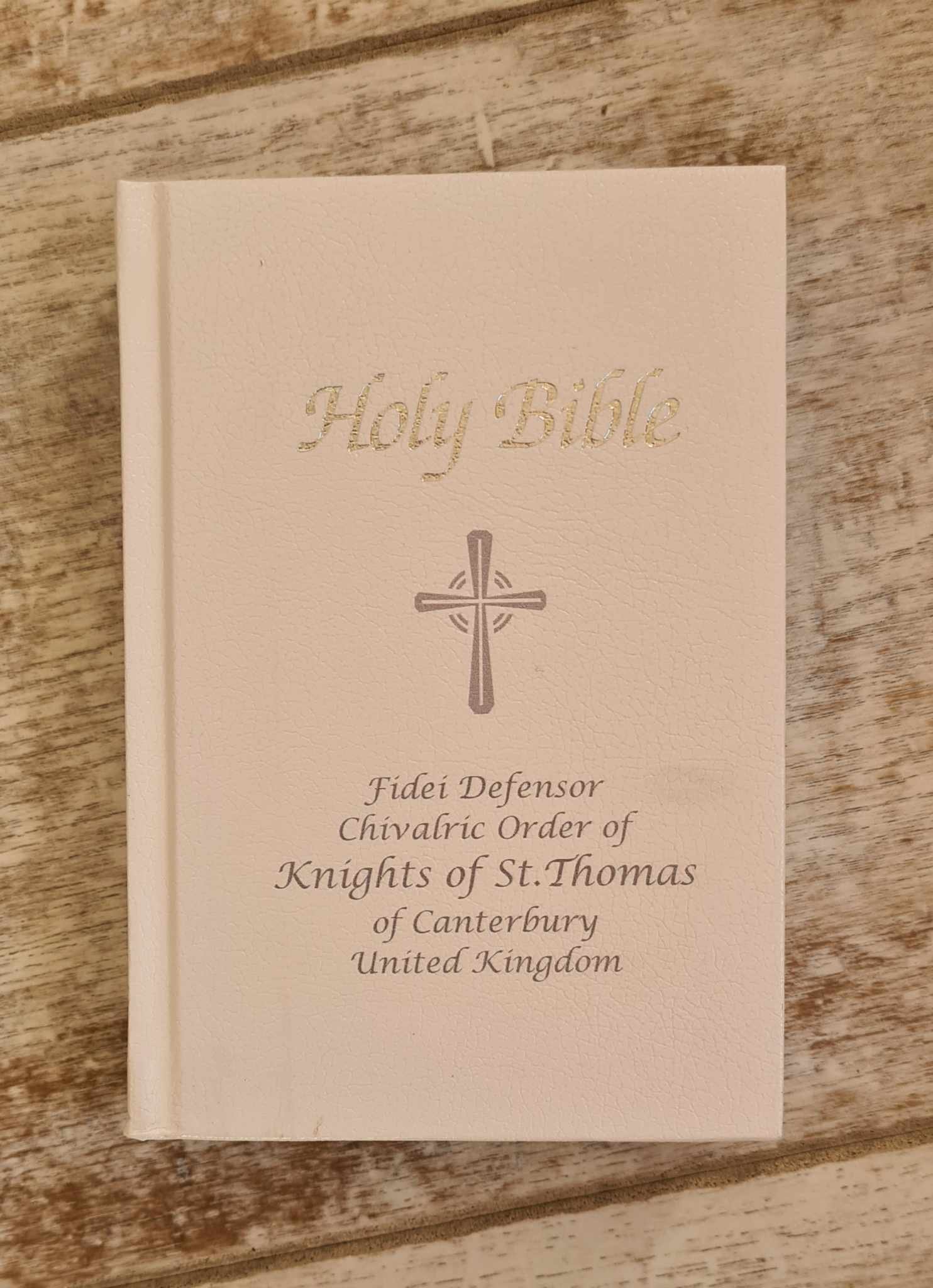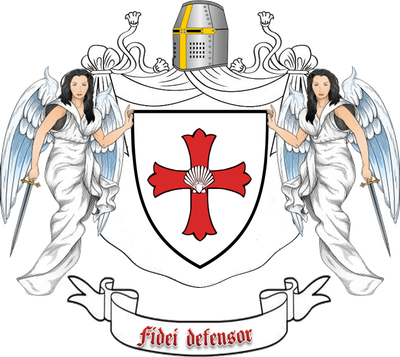Living with purpose and meaning

Knights of Saint Thomas, guardians of ancient traditions of knighthood in the UK, seamlessly blends the valiant spirit of Crusaders with modern ideals of chivalry, creating a community committed to defending the Christian faith and aiding those in need.
Our knights and dames, including two direct descendants of leaders of the ancient order of Acre, carry the torch of a centuries-old legacy of one of the oldest English and Christian institutions in the United Kingdom. Rooted in Crusaders tradition, we stand as a national, self-governing entity, operating under English Law and registered with Companies House in England and Wales - No. 14384320.
Our non-profit organization of chivalry nature is affiliated with the Royal Society of Saint George, proudly ERS bronze awarded member of the Armed Forces Covenant UK, and as consultative member of the United Nations - Department of Economic and Social Affairs, we actively participate in international gatherings, advocating for humanitarian aid, protection, peacebuilding, and sustainable development.
Our knightly order stands as a non-political, non-masonic and ecumenical organization, welcoming individuals of diverse backgrounds and denominations. Regardless of religion, faith, disabilities, gender, race, or sexual orientation, our community thrives on unity and inclusivity.
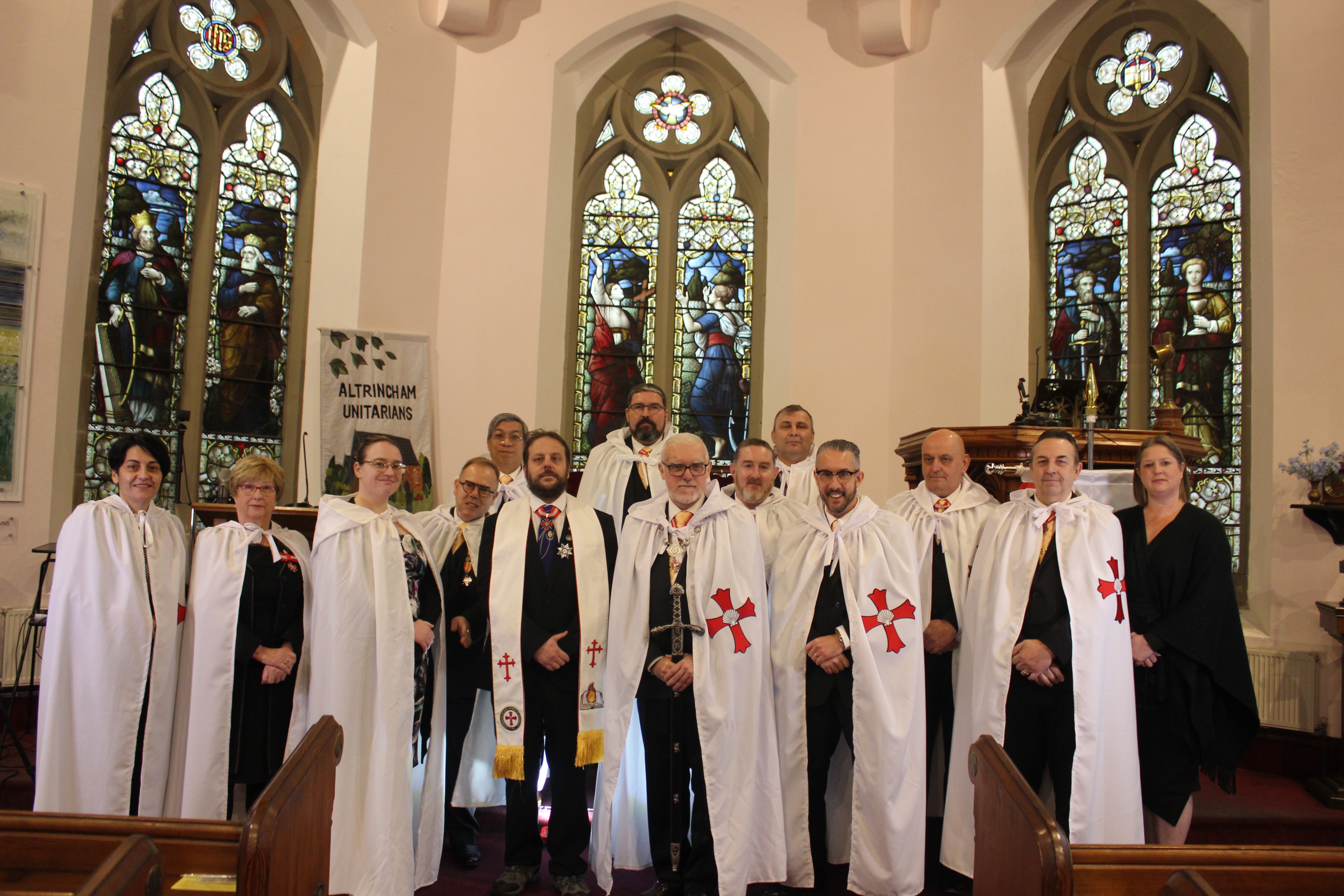
Inspired by the historical Hospitallers of Saint Thomas of Canterbury at Acre, we seamlessly blend ancient chivalric ideals with contemporary concepts of knighthood. Our inclusive community comprises members from various Christian denominations. Our primary focus is on charitable endeavors, embodying the positive attributes of ancient knights in our daily lives. Saint Thomas Becket, martyr of Canterbury, serves as our Spiritual protector, guiding our commitment to noble causes.
As a contemporary British order of knighthood, we are devoted to preserving our rich heritage, advancing Christian principles, and fostering civic responsibility. Our non-profit organization of chivalry nature, headquartered in England, harmoniously blends timeless values of chivalry with charitable tasks and civic duty. Embark on a noble quest with the Order of Knights of Saint Thomas of Canterbury. Discover the legacy of chivalry and become a modern-day knight, defending faith, embracing charity, and upholding the virtues of a bygone era.
As a distinguished order of chivalry, we adhere to a traditional hierarchical structure rooted in European chivalric customs. Within this noble knightly order, members are recognized and honoured for their outstanding service and achievements through a well-defined system of ranks and decorations.

Our order of knighthood places a significant emphasis on active and dedicated participation, ensuring that members who actively engage with the organization have the opportunity for advancement through the ranks. These promotions are not merely based on seniority but are earned through demonstrated commitment, valour, and contributions to the Order's noble ideals and missions. Each promotion is subject to the thoughtful consideration and approval of the Command Council, ensuring that the highest standards of chivalry and honor are maintained.
The pinnacle of achievement within the Order is the esteemed rank of Knight Grand Cross. This prestigious honour is bestowed upon individuals who have displayed exceptional selflessness, civic duty, and unwavering dedication to the Order's principles. It serves as a testament to their unwavering commitment to the chivalric code and the betterment of society.
In addition to promotions, knights and dames may also be recognized for their outstanding achievements or meritorious service through various decorations and medals. These decorations serve as tokens of appreciation and acknowledgment, highlighting exemplary deeds and contributions that align with the Order's core values. Such recognition not only honours individual members but also inspires others to emulate their noble actions, fostering a culture of honour and integrity within the Order.
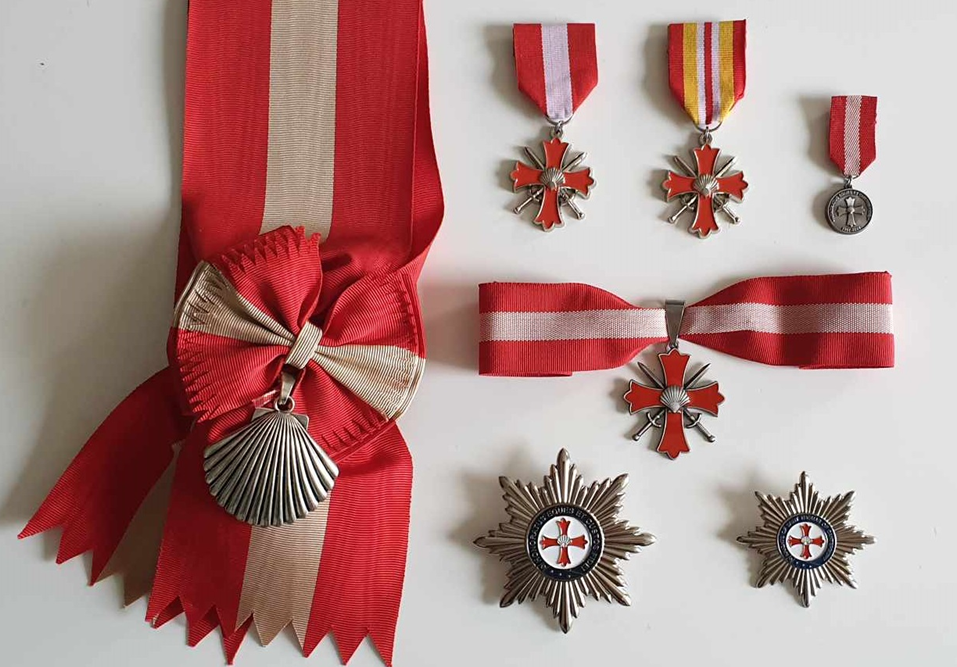
The internal hierarchy and ranks within the organization serve as a way to recognize and honour the achievements and contributions of its members.
Each rank is associated with specific insignia, including lapel pins, full medals, neck badges, stars and sash, that serve as tangible symbols. The design is based on the coat of arms of the Hospitallers of St Thomas of Canterbury at Acre, providing a historical and cultural connection to the heritage of the Order, and consist of a badge on a red-cream-red ribbon. The placement of the badge varies depending on rank, with the lower ranks wearing it on the left chest, middle ranks wearing it around the neck, and senior ranks wearing a star on the chest or sash, allowing for a visual representation of the member's standing within the organization. Dames may wear the badge on a bow on the left chest.
Companion
Sergeant - (SST)
Knight or Dame - (KST/DST)
Officer - (OST)
Commander - (CST)
Grand Officer - (GOST)
Knight / Dame Grand Cross - (KGCST/DGCST)
Special Badges - The Chief Councillor is granted the honour of wearing a livery collar, symbolizing his leadership role.
All ranks wear Church Mantle (white cloak with red cross and white scallop in the centre), dark suit with personalized order tie on religious engagements of the Order.
The wearing of the ceremonial insignia at events and meetings is an important aspect of the Order's culture, as it serves to reinforce the strong bonds of camaraderie and the shared values of its members.
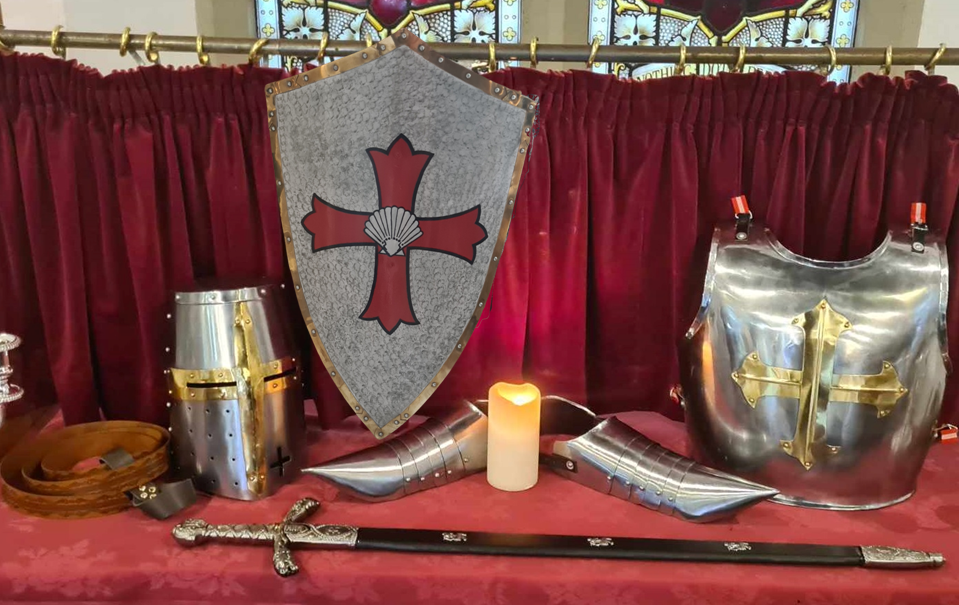
The "Armor of God" is a metaphorical concept derived from Ephesians 6:11 in the Bible. It is described as a set of spiritual armor that Christians are encouraged to put on in order to stand against the schemes of the devil. The full armor of God comprises the Belt of Truth, the Breastplate of Righteousness, the Shoes of the Gospel of Peace, the Shield of Faith, the Helmet of Salvation, and the Sword of the Spirit, which is the Word of God. This metaphor serves as a reminder for Christians to be spiritually equipped to face and overcome the challenges of life. The concept is not to be understood literally, but as a symbolic representation of the spiritual resources available to our knights and dames.
Order's ceremonial sword is a stunning replica of the sword wielded by King Richard I of England, the founder of the historical Order in 1191. One of the most famous stories about this sword is that he sold it to the gullible french claiming it was the legendary Excalibur. This replica allows us to honour historical legacy of the Order with such a magnificent piece.
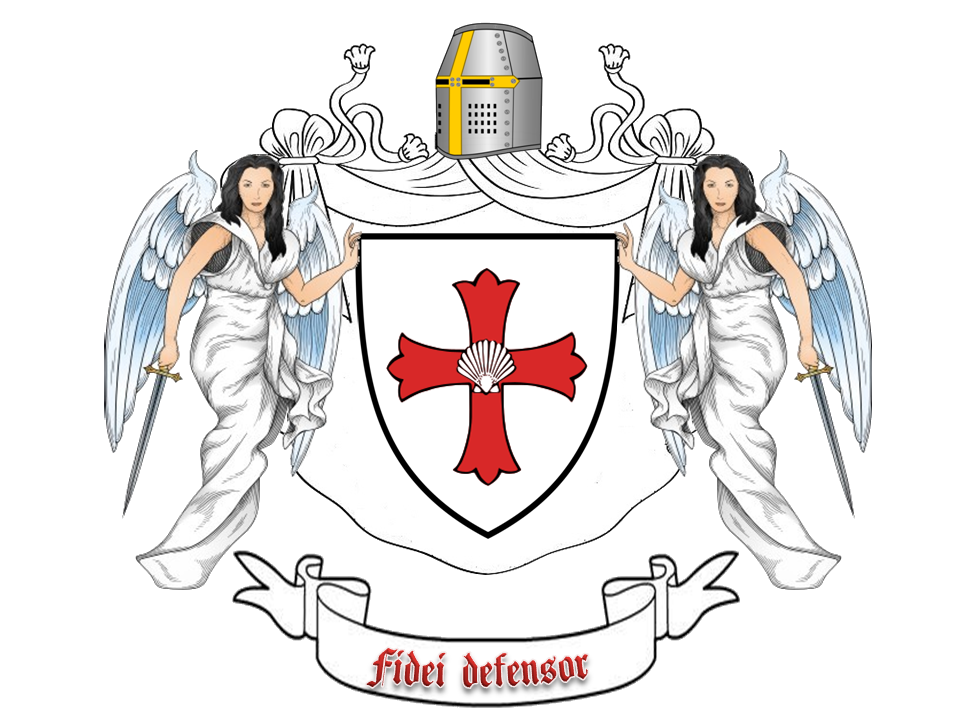
Coat of arms represents the values and history of the Order in a clear and concise manner. Each element has a deep symbolic meaning that reflects commitment to defending the faith and promoting the highest ethical standards.
The white mantle at the centre of the coat of arms represents the symbol of purity in life chosen by our knights. This symbol is central to our order's mission, as we strive to embody and promote the highest standards of ethical conduct and moral character in all our actions.
The helmet above the mantle serves as a reminder of our order's origins as a crusader. It represents our commitment to preserve tradition and respect the aims of historical Knights of Saint Thomas
The red cross and white shell in the middle of the white shield are the historic sign of Knights of Saint Thomas. The red cross is a symbol of Christ's sacrifice and the white shell represents the fact that the Knights of Saint Thomas was baptized and they received the Holy Spirit through this.
The two angels armed with swords that support the shield represent the fact that we are an organization, based on a military hierarchy, that promotes Christian values. They also symbolize the spiritual protection and guidance that our order provides to its members and those in need.
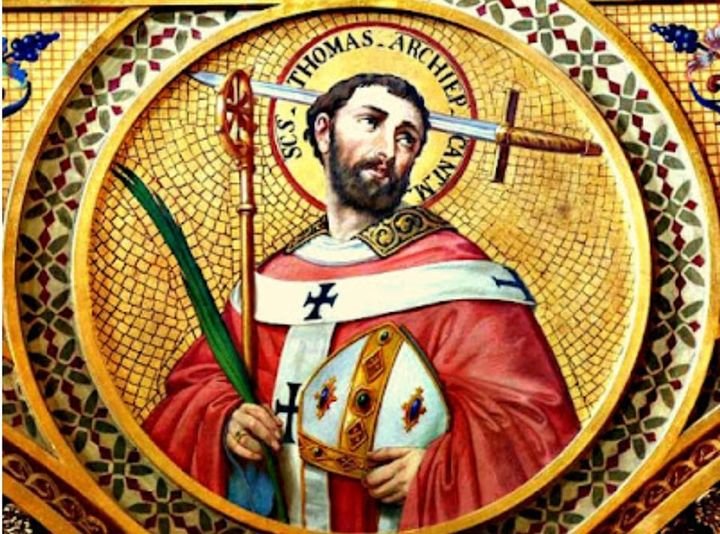
Our Spiritual Patron - Saint Thomas Becket martyr of Canterbury
Thomas Becket, born in 1119 or 1120 in London, came from a merchant family and received education in England and France. He served Archbishop Theobald of Canterbury and later became King Henry II's Lord Chancellor in 1155. However, in 1162, he became Archbishop of Canterbury, leading to conflicts with the king over Church privileges.
Becket resigned as Chancellor and resisted the king's attempts to limit Church power through the Constitutions of Clarendon in 1164. The tension escalated, leading to Becket's murder in Canterbury Cathedral on December 29, 1170. His death shocked Europe, and he was canonized as a saint in 1173. Despite the destruction of his shrine by King Henry VIII, Becket's legacy persisted.
Honored on December 29, Becket symbolizes the Church's independence and religious freedom struggle, revered by the Church of England and Episcopal Church. He remains an enduring symbol of courage and integrity, inspiring the Knights of Saint Thomas of Canterbury in their commitment to Church principles.
